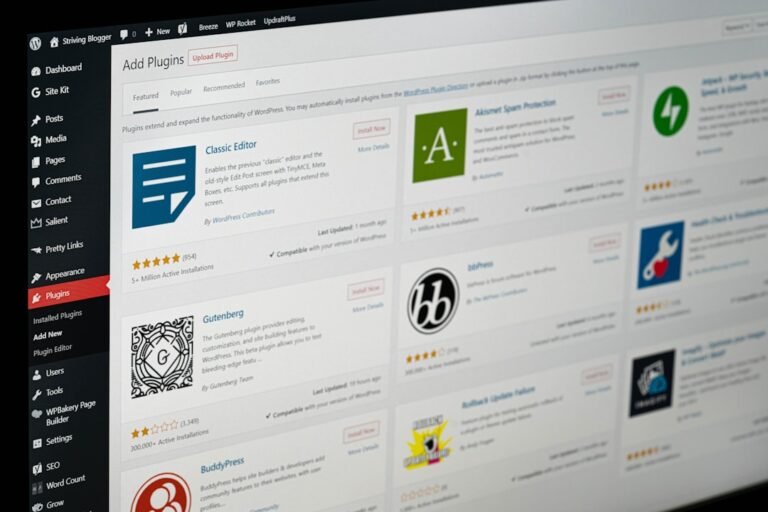practices for new website
Launching a new website can be an exciting venture, but it requires careful planning and execution to ensure its success. With so many factors to consider, from design and development to content and marketing, it can be overwhelming for website owners to know where to start. In this article, we’ll explore the best practices for a new website, covering essential aspects such as design, content, search engine optimization (SEO), and user experience.
I. Planning and Design
Before diving into the development of your website, it’s crucial to plan and design it carefully. Here are some best practices to consider:
**Define your target audience**:
Understand who your website is for, what their needs are, and what they expect from your website.
**Determine your website’s purpose**:
Clearly define the purpose of your website, whether it’s to provide information, sell products, or offer services.
**Create a wireframe and prototype**:
Sketch out a basic design and layout of your website to visualize its structure and functionality.
**Choose a responsive design**:
Ensure that your website is optimized for various devices, including desktops, laptops, tablets, and smartphones.
II. Content Creation
High-quality content is essential for engaging your audience and improving your website’s visibility in search engines. Here are some best practices for content creation:
**Develop a content strategy**:
Plan and create content that resonates with your target audience and aligns with your website’s purpose.
**Write clear and concise copy**:
Use simple and straightforward language to communicate your message effectively.
**Use high-quality images and multimedia**:
Incorporate relevant and high-quality images, videos, and other multimedia elements to enhance user engagement.
**Regularly update and refresh content**:
Keep your content fresh and up-to-date to encourage return visits and improve search engine rankings.
III. Search Engine Optimization (SEO)
SEO is critical for improving your website’s visibility in search engines and driving organic traffic. Here are some best practices for SEO:
**Conduct keyword research**:
Identify relevant keywords and phrases that your target audience uses to search for your content.
**Optimize on-page elements**:
Ensure that your website’s title tags, meta descriptions, headings, and content are optimized for your target keywords.
**Use header tags (H1, H2, H3, etc.)**:
Organize your content using header tags to improve readability and structure.
**Build high-quality backlinks**:
Obtain backlinks from authoritative sources to improve your website’s credibility and search engine rankings.
IV. User Experience (UX) and Accessibility
Providing a positive user experience and ensuring accessibility are crucial for engaging your audience and improving your website’s overall performance. Here are some best practices for UX and accessibility:
**Ensure intuitive navigation**:
Make it easy for users to find what they’re looking for by using clear and concise navigation.
**Use clear and consistent typography**:
Choose a typography that is readable and consistent throughout your website.
**Follow accessibility guidelines**:
Adhere to web accessibility guidelines, such as the Web Content Accessibility Guidelines (WCAG 2.1), to ensure that your website is accessible to all users.
V. Launch and Maintenance
Launching your website is just the beginning. Here are some best practices for launching and maintaining your website:
**Test and iterate**:
Test your website thoroughly before launch and make any necessary adjustments.
**Monitor analytics**:
Track your website’s performance using analytics tools to understand user behavior and identify areas for improvement.
**Regularly update software and plugins**:
Keep your website’s software and plugins up-to-date to ensure security and stability.
**Provide ongoing support and maintenance**:
Regularly review and improve your website to ensure it continues to meet your audience’s needs.
Conclusion
Launching a new website requires careful planning, design, and execution. By following these best practices, you can create a website that engages your audience, improves your search engine rankings, and drives conversions. Remember to stay focused on your target audience, provide high-quality content, and continually monitor and improve your website to ensure its ongoing success. By doing so, you’ll be well on your way to creating a successful website that meets your goals and exceeds your expectations.
About Relvixis: Relvixis is a Canadian-based digital agency specializing in results-driven solutions for businesses looking to grow online.
We offer expert services in SEO optimization, web development, social media management, and marketing automation.
Our team blends creative strategy with technical precision to drive leads, enhance brand visibility, and accelerate digital performance.
To learn more or schedule a free consultation, visit
relvixis.com.







